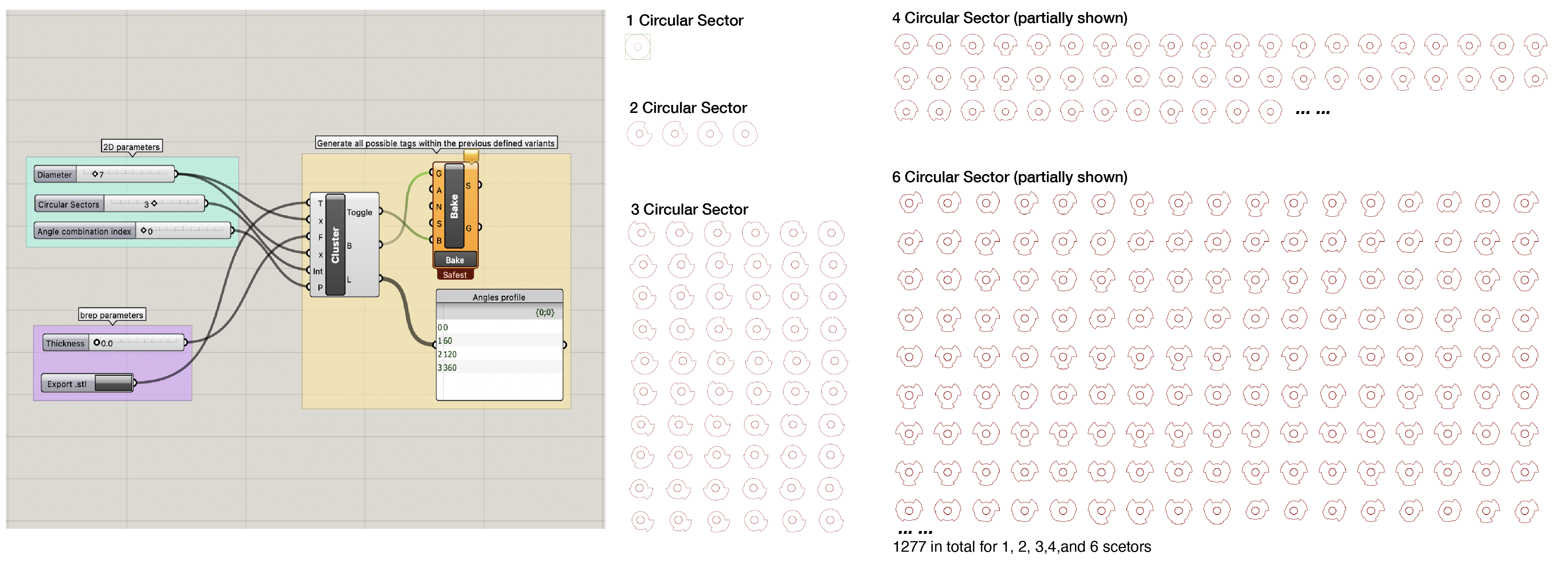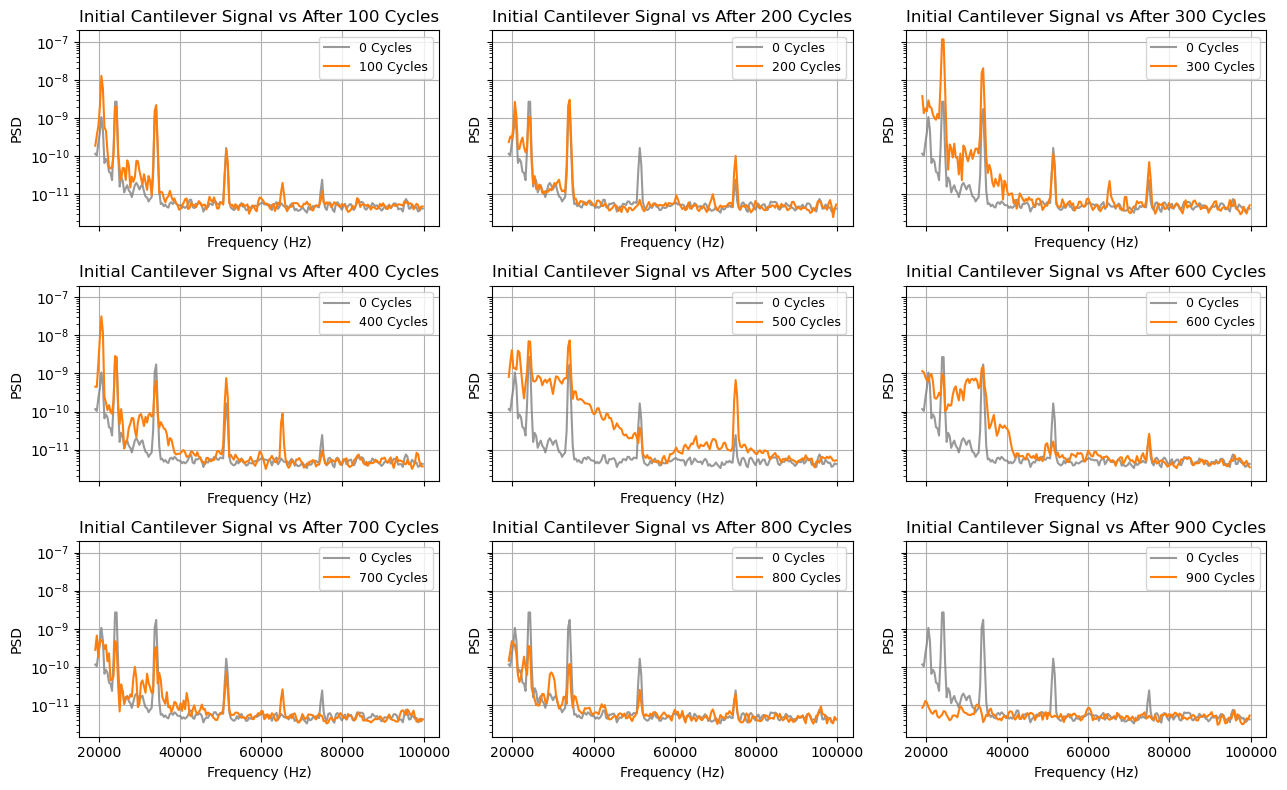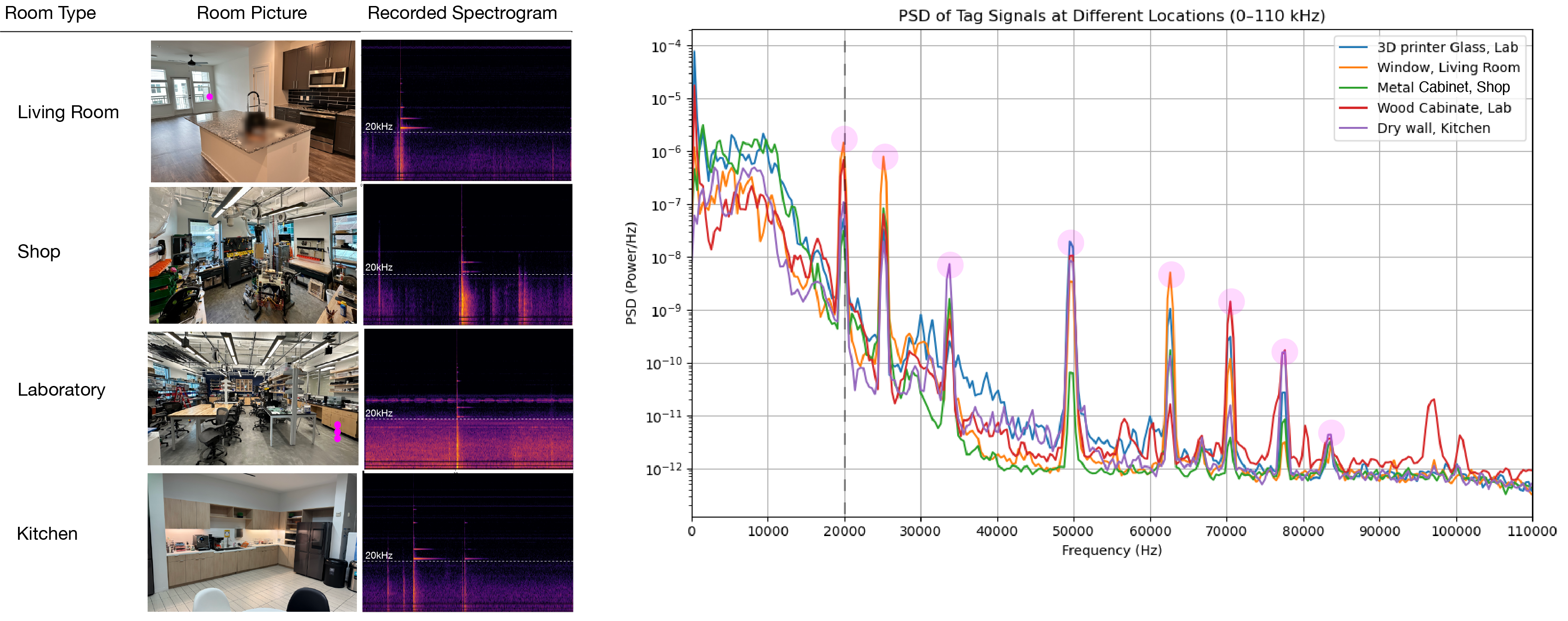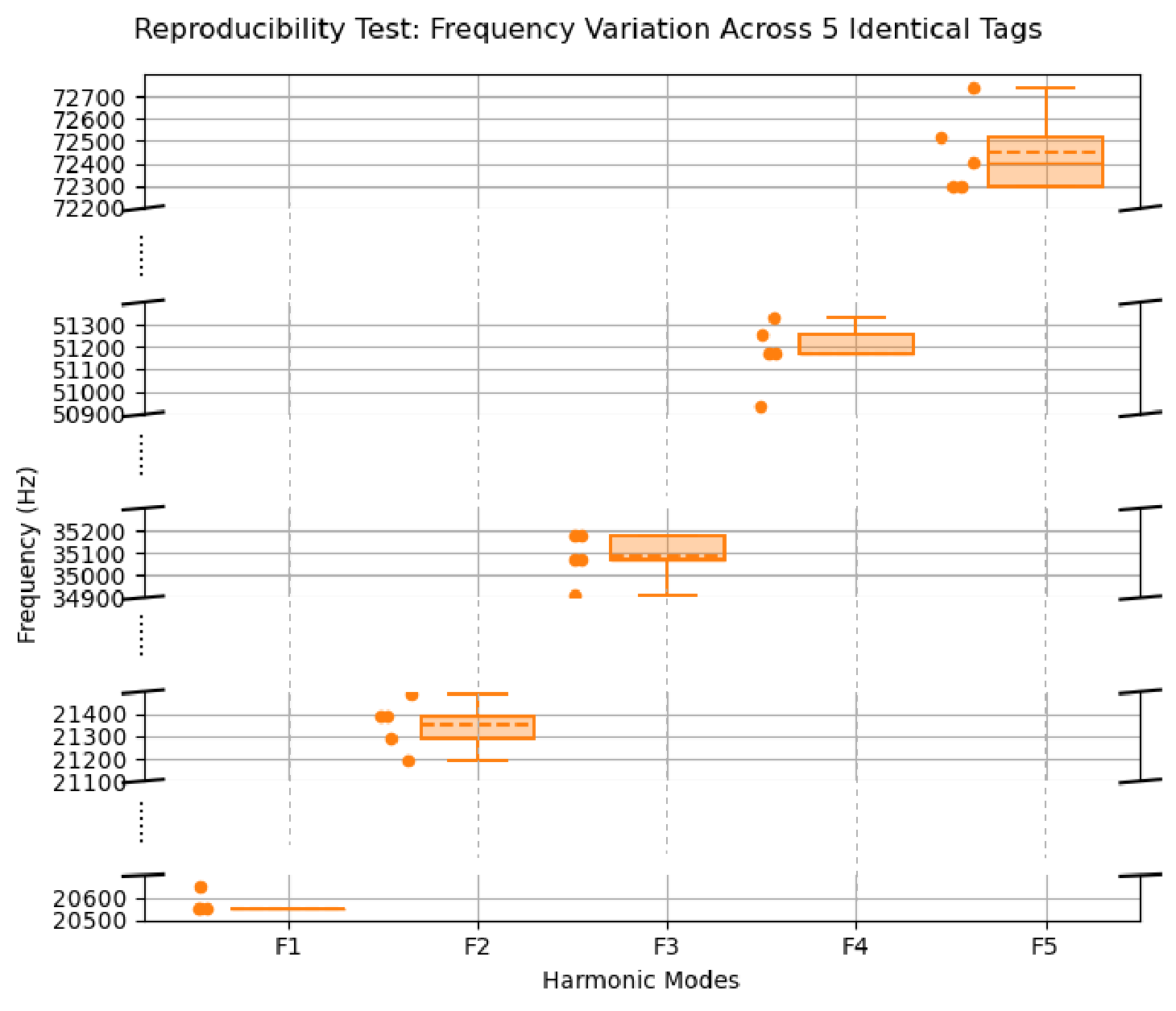SoundOff: Low-cost Passive Ultrasound Tags for Non-invasive and Non-Intrusive
Smart Home Sensing
Yibo Fu, Vivian Shen, Víctor Riera Naranjo, Bolei Deng, Alex T Adams, Josiah Hester
In Proceedings of IMWUT (Ubicomp) Vol. 9, No. 4
doi: https://doi.org/10.1145/3770666


Understanding in real time how we move, operate, and interact within living and working spaces is crucial to applications in smart buildings, elder care, and automated industry. Myriads of systems have used complex electronics to capture this information, yet they often rely on independent sensors or devices that require active power and circuitry, also raising privacy concerns when using cameras or microphones. These solutions are often difficult to setup, have incompatible ecosystems, and require extra cost when upgrading already existing devices.
Here we propose SoundOff, a system that deploys ultra-low-cost, easily manufacturable, passive ultrasound emitting tags in any indoor environment (i.e., door knobs, toilet lids, cabinets, faucets, and windows), where the movement of this furniture causes a unique ultrasonic emission identifiable by a wearable device worn by users. These tags generate ultrasound signals during everyday interaction, above the range of human hearing, making them non-intrusive and non-invasive. This electronics-free, zero-infrastructure solution provides a scalable way to instrument spaces. Through a series of performance evaluations, we show that the ultrasonic emissions generated by SoundOff with different geometrical designs are not only robust to various environmental noises but also easily distinguishable from each other. Through physics-based modeling, we demonstrate how to systematically generate thousands of designs with unique and easily distinguishable ultrasonic emissions, enabling a wide range of interactions that can be mapped to custom automation systems such as Home Assistant. We open-source the work, including a geometric modeling pipeline and fabrication guide that enables design exploration, as well as an easily modifiable recognition system, allowing SoundOff tags to be replicated and disseminated throughout any indoor environment.
Here we propose SoundOff, a system that deploys ultra-low-cost, easily manufacturable, passive ultrasound emitting tags in any indoor environment (i.e., door knobs, toilet lids, cabinets, faucets, and windows), where the movement of this furniture causes a unique ultrasonic emission identifiable by a wearable device worn by users. These tags generate ultrasound signals during everyday interaction, above the range of human hearing, making them non-intrusive and non-invasive. This electronics-free, zero-infrastructure solution provides a scalable way to instrument spaces. Through a series of performance evaluations, we show that the ultrasonic emissions generated by SoundOff with different geometrical designs are not only robust to various environmental noises but also easily distinguishable from each other. Through physics-based modeling, we demonstrate how to systematically generate thousands of designs with unique and easily distinguishable ultrasonic emissions, enabling a wide range of interactions that can be mapped to custom automation systems such as Home Assistant. We open-source the work, including a geometric modeling pipeline and fabrication guide that enables design exploration, as well as an easily modifiable recognition system, allowing SoundOff tags to be replicated and disseminated throughout any indoor environment.




(1) We bandpass the microphone input from 20 kHz to 100 kHz, so that we process ultrasound frequencies only.
(2) We find the impulse response full-spectrogram spike by finding the local maxima in amplitude.
(3) Each peak is segmented into a 0.15 second data window, and a spectrogram is computed using Librosa.
(4) For each segment, we first filter out vertical spikes using a median filter with a window size of 6, which corresponds to approximately 0.008 seconds at our sampling rate of 384,kHz (hop length = 512, FFT size = 1024).
(5) For each filtered segment, we extract 10 local maxima along the frequency axis: 4 below 35 kHz, 3 between 35–65 kHz, and 3 above 65 kHz. This binning approach ensures that local maxima are selected relative to their neighboring frequencies rather than globally across the spectrum. Since higher frequencies attenuate exponentially faster, selecting global peaks would bias toward lower frequencies. The binning strategy helps balance this and ensures fair representation of high-frequency content.
(6) A frequency is considered a match if it falls within a ±400 Hz tolerance of a labeled frequency.
(7) To improve robustness, we apply a penalty to multiple matches with large deviations from the expected values, reducing their contribution to the match score.
(8) If at least 40% of the labeled frequencies (e.g., 4 out of 9 for Tag 1) are matched & the penalty score is less than 0.2, the signal is classified as that tag.
(9) Send the classified tag name, or ‘Uncategorized’ if no match is found, via Bluetooth or an HTTP request.
(2) We find the impulse response full-spectrogram spike by finding the local maxima in amplitude.
(3) Each peak is segmented into a 0.15 second data window, and a spectrogram is computed using Librosa.
(4) For each segment, we first filter out vertical spikes using a median filter with a window size of 6, which corresponds to approximately 0.008 seconds at our sampling rate of 384,kHz (hop length = 512, FFT size = 1024).
(5) For each filtered segment, we extract 10 local maxima along the frequency axis: 4 below 35 kHz, 3 between 35–65 kHz, and 3 above 65 kHz. This binning approach ensures that local maxima are selected relative to their neighboring frequencies rather than globally across the spectrum. Since higher frequencies attenuate exponentially faster, selecting global peaks would bias toward lower frequencies. The binning strategy helps balance this and ensures fair representation of high-frequency content.
(6) A frequency is considered a match if it falls within a ±400 Hz tolerance of a labeled frequency.
(7) To improve robustness, we apply a penalty to multiple matches with large deviations from the expected values, reducing their contribution to the match score.
(8) If at least 40% of the labeled frequencies (e.g., 4 out of 9 for Tag 1) are matched & the penalty score is less than 0.2, the signal is classified as that tag.
(9) Send the classified tag name, or ‘Uncategorized’ if no match is found, via Bluetooth or an HTTP request.


Automated Parametric Shape Generating

Evaluation of SoundOff System








Real-world Deployed SoundOff Accuracy

Applications include non-intrusive elderly care, Smart home notifications
